Windows Phone 8.1: Microsoft finally gets it right
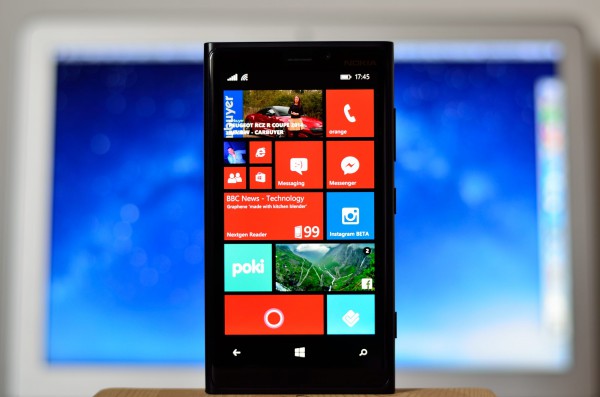
Windows Phone 8.1 signals that Microsoft is now finally committed to turning its smartphone operating system into a powerful rival, and viable alternative, to Android and iOS. Gone are the days when essential features were demanded yet completely ignored in the next major update. No more apologies are needed. Users are now finally getting what they have long asked for, and then some. Yes, finally.
Coming from Windows Phone 8, Windows Phone 8.1 feels like a huge improvement. When the software upgrade officially rolls out, I suspect many users will have a "wow" moment upon experiencing the new features, and the benefits they bring to the table, for the first time. I know I did. You can blame its unimpressive predecessor for that.
Reliable Notifications
Looking at my old stories discussing Windows Phone's shortcomings and comparing it with Android and iOS, there is virtually nothing that I have wanted that is now not available in Windows Phone 8.1. I have been quite vocal about the inefficiency of live tiles as a reliable means of getting notifications; Microsoft has responded and given us a useful notifications center (called Action Center probably because it sounds decisive and cool).
Action Center works in a similar way to its Android counterpart, which means we can dismiss individual entries or all at once. It can also be triggered while running full-screen apps, by swiping twice from the top of the screen (the second time is likely so that users don't trigger it by mistake, especially in games). And that is how it should work. No complaints there.
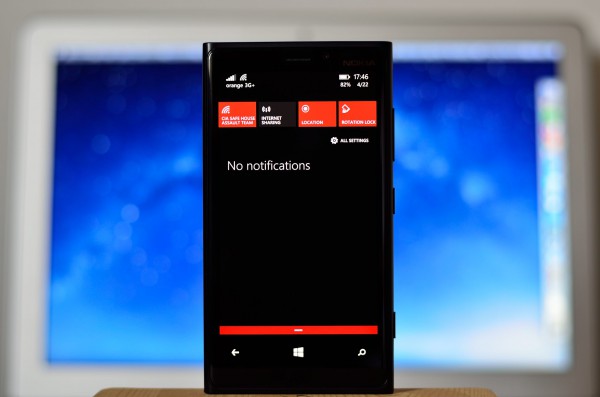
A way of quickly altering the state of Wi-Fi, Bluetooth and other hardware features has also been requested, and now it can be found at the top of the Action Center. And the toggles are configurable too, which reveals a lot about Microsoft's design philosophy going forward. The software giant is clearly aiming at empowering users, more so than it ever did with previous Windows Phone iterations. I am not sure if developers can tap into this, but there is little missing from the available options (aside from a flashlight toggle, off the top of my head) anyway.
My Personal Assistant
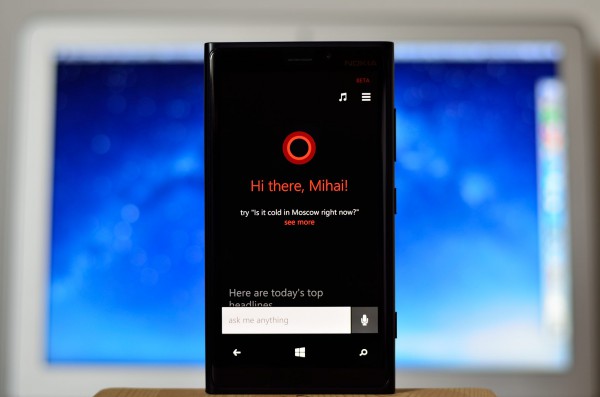
Cortana is an impressive first effort. What it (I refuse to play an active role in Microsoft's marketing machine by calling Cortana "she") can do is limited by what users set in its notebook, which contains information related to contacts, places, interests and so on. It is a design choice which appears to be meant to keep privacy advocates happy, as users are always in control of what it can and cannot access.
Cortana gets the basics right, as voice recognition is well implemented. And Microsoft makes a visible effort at making recognition even better by adding some context when interpreting the commands. After being corrected once in a certain scenario, like asking it to call someone whose name is difficult to get, it understands and seems to learn what you mean when repeating the same query in the future, even though a name you might say is not pronounced or recognized correctly all the time.
Microsoft's countless years of research are put to good use here, as Cortana can pick up follow-up questions and commands. Ask for the weather and it shows you the information, with temperatures in Fahrenheit. Ask "What about in Celsius?" and it delivers. Same goes for Kelvin even. Or ask "What about in Tokyo?" and it is clever enough to figure out you want to see weather information for Japan's capital, without specifically saying the word "weather" in the follow-up query. This is akin to how people talk to each other, and it is refreshing to see that concept put into practice in Cortana.
There are some areas which reveal why Cortana is currently labeled as beta. It sometimes has trouble speaking the answers back as it shows a Bing search results page instead. It also has trouble understanding what to do with some things in the notebook. It can give me directions to a place called "Home", but it cannot do the same for "Parents' Home". The limitation is the Bing Maps back-end, I suspect, as you can only have one address set for home, and the other addresses are probably not taken into account when using the "Take me [to place X]" command.
I know many see Cortana as the highlight of Windows Phone 8.1, but the notifications center is a much more useful feature more of the time in my case and for most users as well. The limited availability of the new personal assistant, which is now only meant to be used in US, is the reason for this.
As a personal assistant, Cortana works decently well even though it does not always listen to you, as a real personal assistant would. An always-on setup would go a long way there, as it can remove any friction, for instance while driving. There is room for improvement, naturally, but at least Cortana is on the right track from the get-go. It is worth pointing out that it integrates with Microsoft's Bing suite of apps, to show you a news article in the News app, for instance.

Cortana makes way for Quiet Hours (another feature that has been requested and is of particular interest to me), which is introduced as a sub-feature of the personal assistant to manage. Users can choose who can break through during the time Quiet Hours is enabled, and turn it on manually. If enabled, those who text -- who may not be allowed otherwise -- can send a "knock knock" message to break through the wall as well.
Refinements
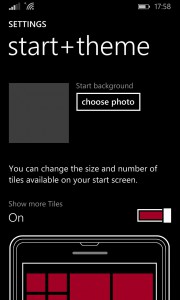 To make Windows Phone 8.1 more personal, Microsoft gives users the option to swap the standard live tile colors for a custom background, which spans across all live tiles that support transparency. It is not a background change per se, which I have previously asked for before, but more of a new foreground option. It can look nice, given an optimized image, though, in my opinion, the design of the Windows Phone start screen does not lend itself all that well to it.
To make Windows Phone 8.1 more personal, Microsoft gives users the option to swap the standard live tile colors for a custom background, which spans across all live tiles that support transparency. It is not a background change per se, which I have previously asked for before, but more of a new foreground option. It can look nice, given an optimized image, though, in my opinion, the design of the Windows Phone start screen does not lend itself all that well to it.
Visually, the biggest change for me is the option to fit more live tiles on the start screen, which is now enabled for all Windows Phones. Microsoft introduced it, late last year, specifically for large devices like the Nokia Lumia 1520, in Windows Phone 8 Update 3, so users can make the best out of the screen real estate. I have to say, even on a 4-inch display, enabling this option is worthwhile, as long as you do not have trouble seeing the smaller text.
Another area of improvement is the Store app, which can now finally apply updates automatically. By default, this is only done via Wi-Fi but users can enable the feature to work on cellular connections as well. This is a time-saver. Android has offered it for a long time and, starting with the latest version, iOS does as well. Microsoft has also revamped the Windows Phone Store layout, which now better emphasizes some apps and does not feel as crude as it did before.
To make Battery Saver easier to access and leverage in Windows Phone 8.1, it gets its own place in the app list. The operating system also adds a more advanced way of controlling how apps operate in the background, as users can manually set which offerings can override the battery saving profile when it is active. Cortana, for instance, is set to work as such.
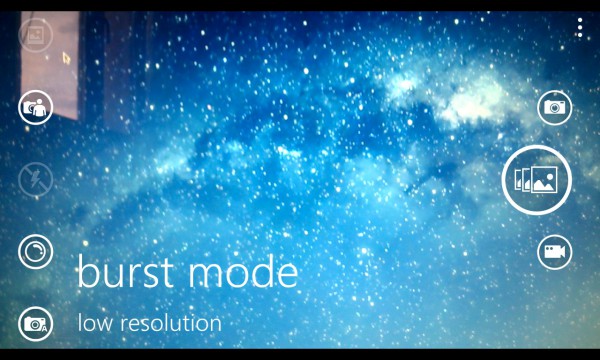
While the Camera app will not be used by default by most Windows Phone users, who will undoubtedly prefer Nokia's much more advanced Camera app instead, it is nice to see Microsoft is trying to improve the experience for Windows Phone photographers. The enhancements Windows Phone 8.1 brings here are not many in numbers, but they are significant nonetheless. The layout has been tweaked to include the main camera controls on the left side of the screen (in landscape orientation), a toggle on the opposite side reveals the new burst shot mode (which takes lower-resolution snaps when it is activated), and the settings menu now includes a toggle to enable flash while recording video. The new Camera app looks quite similar to Nokia Camera, which is, however, more powerful.
Internet Explorer has gained a few new features as well, as it can now finally sync with its Windows counterpart (how many will use this feature is debatable though). It now asks you if you want to store passwords and offers a reader mode, new data-saving options, support for more tabs (the highest has been just six prior to Windows Phone 8.1) and improved compatibility with many websites (including YouTube), as the main improvements.
Questionable Changes
Social butterflies will quickly notice Windows Phone 8.1 no longer allows them to send a message from the Me tile on multiple social networks at once. The update has removed that feature, as Microsoft wants users to do it through the available apps, even when trying to post an update from the Me tile. So far, only Facebook has been updated to be compatible with this change.
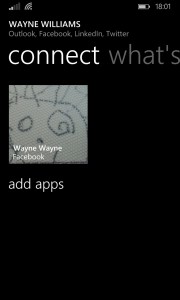 The People hub is leveraging dedicated social network apps as well, to show contact information and social updates, as Windows Phone 8.1 tries to leave this bit to developers. Again, only Facebook has been updated to support this behavior. Expect Twitter to follow shortly.
The People hub is leveraging dedicated social network apps as well, to show contact information and social updates, as Windows Phone 8.1 tries to leave this bit to developers. Again, only Facebook has been updated to support this behavior. Expect Twitter to follow shortly.
Both of these changes give Windows Phone 8.1 users a more limiting experience now, but it is not difficult to see why Microsoft has chosen to go down this path. More social networks can tap into the social features of the OS, and give users access to new options much quicker than Microsoft could on its own.
Unsurprisingly, then, the Messaging app ditched the Facebook Messenger integration in Windows Phone 8.1, following the release of the dedicated app earlier this year. The OS is clearly wanting users to approach things in an app-centric kind of way, which is typical of iOS. If the right apps come, this is the right strategy going forward.
Microsoft has also decentralized the Music+Videos app into more separate apps. Music gets its own app, and so does Videos. But FM Radio, for the devices which feature the needed hardware, is also listed as an individual offering in the app list. So is Podcasts. Windows Phone loyalists might have trouble adjusting to the new way Microsoft wants to do things, but users of other platforms will find it easier to adjust to Windows Phone 8.1 if they want to switch. And it also gives the software giant the option to update those apps via the Windows Phone Store, without having to go through mobile operator approvals and so on.
And More, Except Apps
I have only touched the surface on what Windows Phone 8.1 can do, but these are the main areas which, in my opinion, will impact the experience of most users. There are changes all over the place (like a revamped Share functionality, which developers must support in their apps to become relevant), which may cause a bit of frustration at first for those who have used the OS for a long time, as some options are no longer where one would expect them to be (or nowhere at all, like the option to save screenshots to OneDrive from the Photos app).
Microsoft may have transformed Windows Phone with Windows Phone 8.1, but, sadly, it cannot do the same for Windows Phone Store. The operating system is as good as Android and iOS are, at the moment, with regards to essential and even advanced features. Potential users will not find it as instrumental in their decision to stick with Android and iOS, but they will still find fault in the available apps as a reason to avoid the big move.
Microsoft has laid the right foundation for developers to tap into Windows Phone 8.1, but they do need to release apps that actually take advantage of this, as well as offerings that fill gaps in other areas. The operating system is so good, finally, that the Windows Phone Store is the only thing holding it back.
Photo Credit: Mihaita Bamburic
